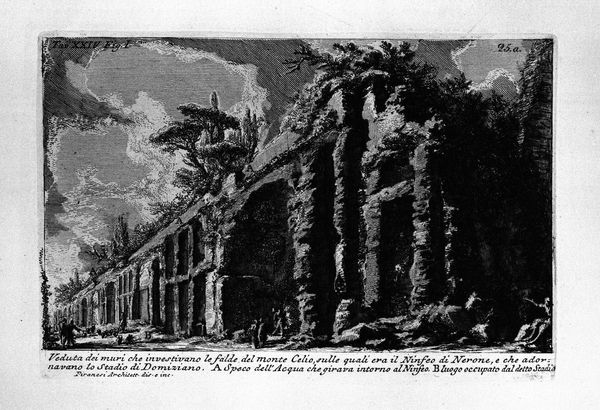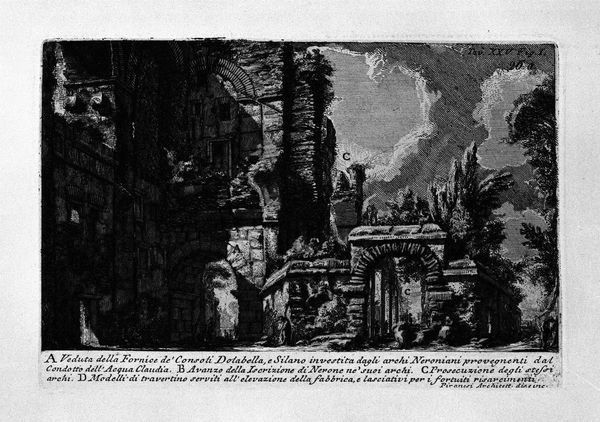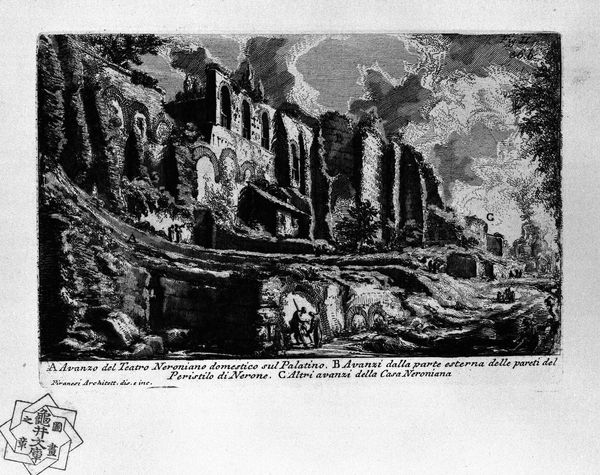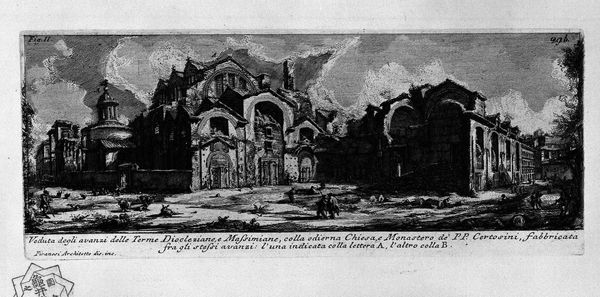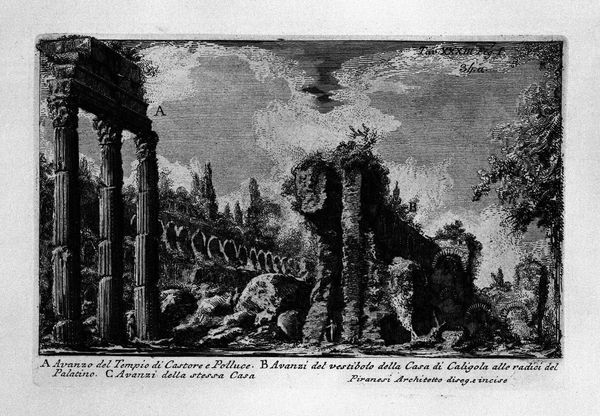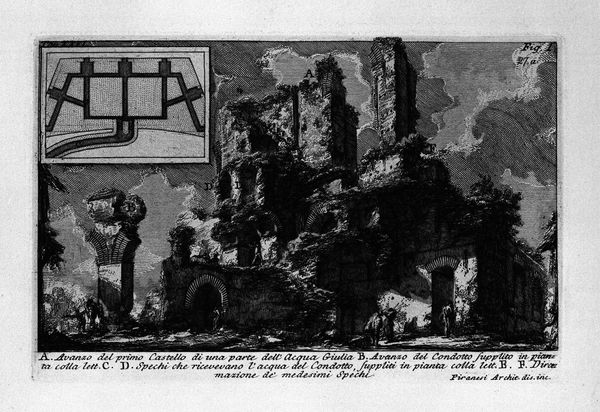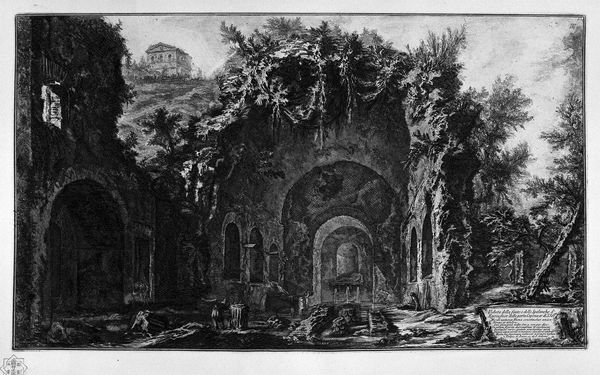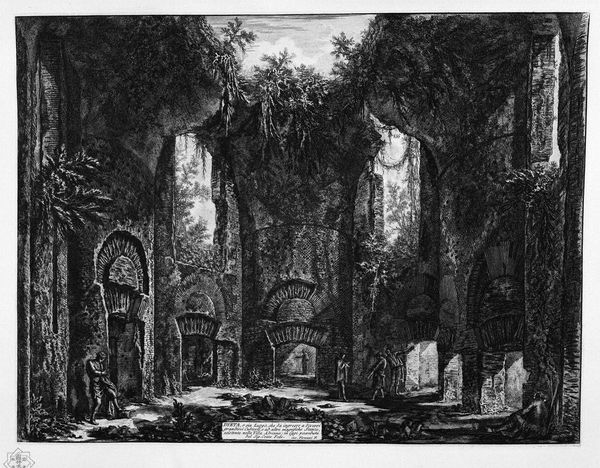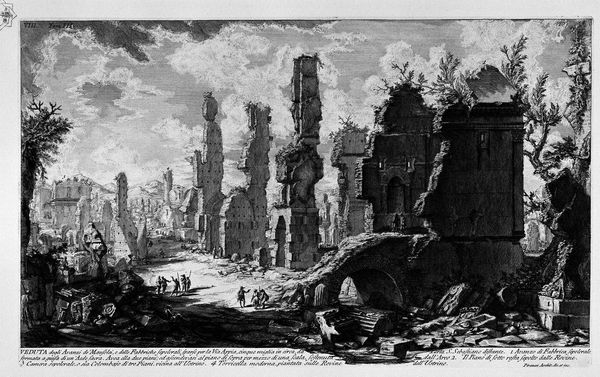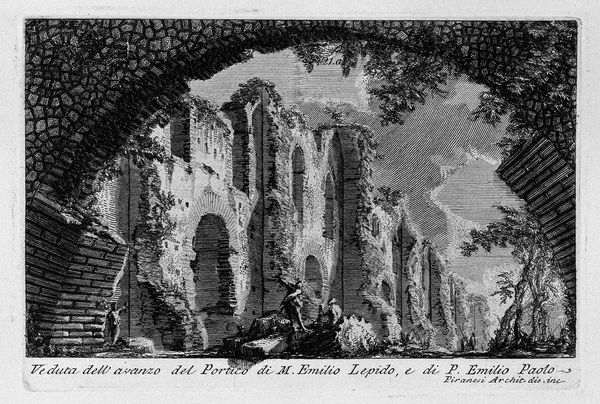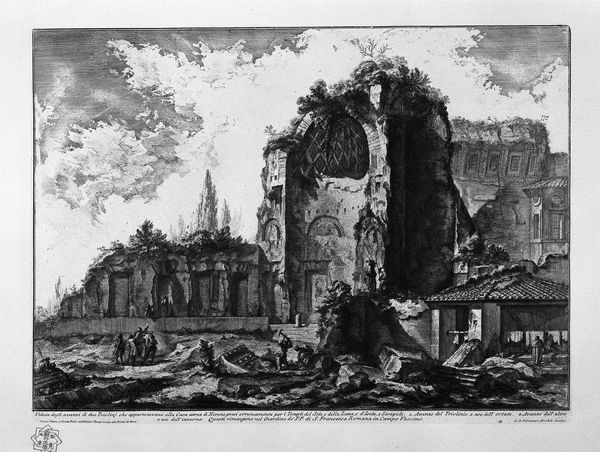
print, engraving, architecture
#
baroque
# print
#
landscape
#
romanesque
#
cityscape
#
engraving
#
architecture
Copyright: Public domain
Giovanni Battista Piranesi created this etching, "Nero's Aqueduct," sometime before 1778, using a metal plate and acid. This wasn't just drawing; it was a chemical dance where lines were eaten into the metal, allowing for the creation of multiple prints. Piranesi wasn't just documenting; he was interpreting. Look at how the aqueduct looms, almost monstrous, against the figures. It dwarfs them, highlighting the scale of Roman ambition and the labor involved in such constructions. The aqueduct, once a symbol of Roman ingenuity, is now a ruin, overgrown and imposing, a testament to time's passage and the decline of empires. Consider the labor involved, not just in the original construction, but also in Piranesi's process. Each line, each shadow meticulously etched, speaks to hours of skilled work. This print invites us to consider not only the grandeur of Rome but also the hands that built it, and the labor that keeps its memory alive. The distinctions between art, craft, and industrial prowess blur, urging us to appreciate the social and material context of both the aqueduct and the print itself.
Comments
No comments
Be the first to comment and join the conversation on the ultimate creative platform.
